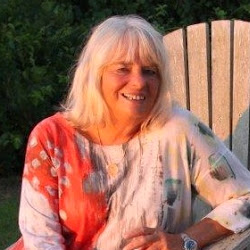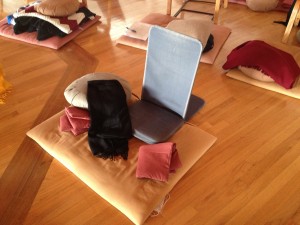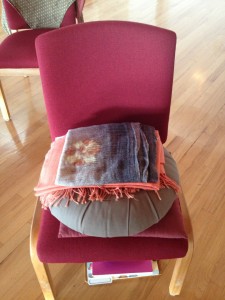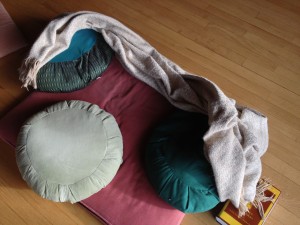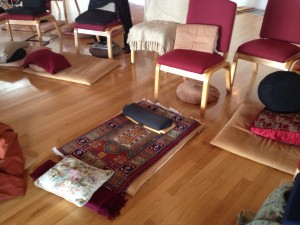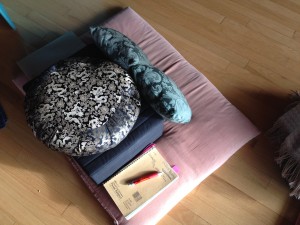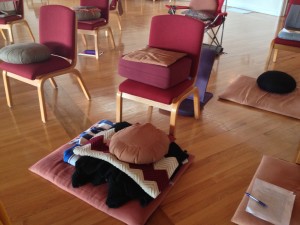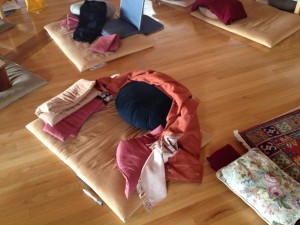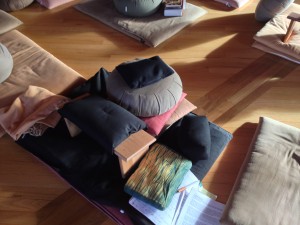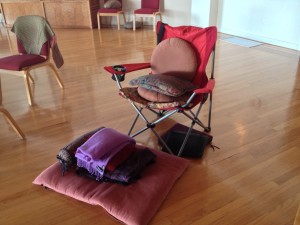How to Have a Happy Brain
While I was away on retreat in November, Mirabai Bush (my beloved teacher, Founder of the Center for Contemplative Mind in Society and key adviser to Google’s “Search Inside Yourself” curriculum) conducted a webinar with well-known neuroscientist Dr. Richard Davidson, Director of the Waisman Laboratory for Brain Imaging and Behavior at the University of Wisconsin-Madison.
They discussed Dr. Davidson’s current research on meditation as it relates to happiness, neuroplasticity, the potential for meditation to affect gene expression, and its effect on our ability to recover from negative emotions. It was part in a series of free, monthly webinars called “Working with Mindfulness.”
You can watch it here on YouTube.
So Many Worlds
Buddhist Cosmology is also one of the topics of this month’s DPP homework, and let me just say….it’s pretty crazy! One of our readings is an article by Thanissaro Bhikkhu with a chart describing the 31 Planes of Existence. I consider myself dubious-but-open on this subject, but as metaphors for states of mind, they could be quite helpful. And from a literary point of view, I think they’re fascinating.
The Immaterial World
There are 4 levels here…(1) Neither-peception-nor-non-perception, (2) Nothingness, (3) Infinite Consciousness, (4) Infinite Space. (The inhabitants of these realms are possessed entirely of mind!)
The Fine-Material World
There are 16 levels here…(1) Peerless Devas, (2) Clear-sighted Devas, (3) Beautiful Devas, (4) Untroubled Devas, (5) Devas not Falling Away, (6) Unconscious Beings (only body present, no mind), (7) Very Fruitful Devas, (8) Devas of Refulgent Glory, (9) Devas of Unbounded Glory, (10) Devas of Limited Glory, (11) Devas of Streaming Radiance, (12) Devas of Unbounded Radiance, (13) Devas of Limited Radiance, (14) Great Brahmas, (13) Ministers of Brahma, (15) Retinue of Brahma
The Sensuous World
There are 7 levels here….(1) Devas Wielding Power over the Creation of Others, (2) Devas Delighting in Creation, (3) Contented Devas, (4) Yama Devas (who live in the air, free of all difficulties), (5) The Thirty-three Gods (many of whom live in mansions in the air), (6) Devas of the Four Great Kings (celestial musicians and various tree spirits, analogous to the goblins, trolls and fairies of Western literature, (7) Human Beings…which is where we are…for now!
States of Deprivation
There are 4 realms here…(1) Titans (or Angry Gods, who are engaged in relentless conflict with each other), (2) Hungry Ghosts (unhappy spirits who wander hopelessly searching in vain for sensual fulfillment), (3) Animals, (4) Hell (not some place you’d want to land…but at least it’s not eternal)
(image from “The Buddha Tarot” by Robert M. Place)
Swimming, Not Drinking
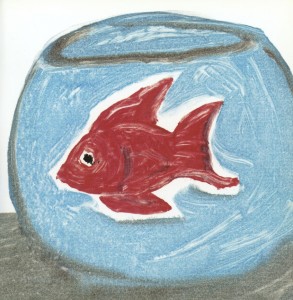 I love this line from Kamma and the End of Kamma:
I love this line from Kamma and the End of Kamma:
We don’t have to drink the water we’re swimming through.
Here’s more:
To not drink in the ocean of samsara (the endless rolling on of habits and entanglements) means checking and restraining the pull of the senses, checking and putting aside the “programs” of the mainstream, and cultivating full attention and awareness…
Through following the Eightfold Path, you realize that you’re not as embedded in samsara as it might seem.
For a start, you never actually become anything for very long. Sure, you seem to go through periods of agitation and tension, but with practice there are periods of joy and humor–and as you get more skilled in attending to the mind, the habit of holding on to particular states loosens up.
You find yourself identifying with this or that state less and less; and that reduces the stress and turmoil.
Seen like this, human life is a great opportunity. Regardless of the effects that we inherit, we can always act skillfully and cultivate the mind; we can always move towards goodness, happiness and liberation.
“Kamma and the End of Kamma” by Ajahn Sucitto is available free in pdf form by clicking here. (Scroll down…the first page has no text.)
(image from A Whole World, by Couprie and Louchard)
After the Sitting
 We had a sweet little group at the Hi-Pointe Sitting last night, and then afterwards, several of us went over to Kaldi’s for chai and biscotti and a bit more sangha building.
We had a sweet little group at the Hi-Pointe Sitting last night, and then afterwards, several of us went over to Kaldi’s for chai and biscotti and a bit more sangha building.
There was discussion about looking for an “overview” or “map” of the teachings and I said that the basics of the practice are the Four Noble Truths.
Traditionally, the Four Noble Truths are:
(1) There is suffering.
(2) The cause of suffering is clinging.
(3) There is an end to suffering.
(4) The way to the end of suffering is the Noble Eight-fold Path
The Eight-Fold Path is:
(1) Wise View
(2) Wise Intention
(3) Wise Speech
(4) Wise Action
(5) Wise Livelihood
(6) Wise Effort
(7) Wise Mindfulness
(8) Wise Concentration
Or, more conversationally, these truths are:
(1) Even at it’s best, life is challenging and filled with disappointments.
(2) The reason for this is that we are always wanting things to be different than they are (easier, better, more satisfying, longer lasting, etc.).
(3) It doesn’t have to be like that.
(4) The way out of this difficulty is to follow the path offered by the Buddha.
This path is:
(1) Understanding the way things really are
(2) Turning one’s mind toward that understanding
(3) Speaking in ways that are not harmful
(4) Acting in ways that are not harmful
(5) Supporting oneself in ways that are not harmful
(6) Doing things that are wholesome and not doing things that are unwholesome
(7) Being aware of what’s actually happening
(8) Training the mind to be calm and collected
Inheritance
As part of this month’s DPP homework, we have been asked to read/recite the Buddha’s teaching on kamma at the beginning, middle and end of each day…and to reflect on this in our meditation. (Kamma — or karma in Sanskrit — means “action.”) Want to join me?
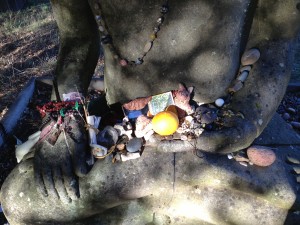 All beings are the owners of their actions,
All beings are the owners of their actions,
heir to their actions,
born of their actions,
related through their actions,
and live dependent on their actions.
Whatever they may do,
for good or for ill,
to that they will fall heir.
The End of Kamma
 The DPP homework for December has arrived and one of the assignments is to read the preface and first chapter of Kamma and the End of Kamma, by Ajahn Sucitto. It’s a very enlightening book. So much so, that one of the previous DPP-ers paid to have 100 copies shipped from England, as a gift to each us in the current program. (The printed book is free, but only available in England. Electronic versions are also free on iBooks and here in pdf form.)
The DPP homework for December has arrived and one of the assignments is to read the preface and first chapter of Kamma and the End of Kamma, by Ajahn Sucitto. It’s a very enlightening book. So much so, that one of the previous DPP-ers paid to have 100 copies shipped from England, as a gift to each us in the current program. (The printed book is free, but only available in England. Electronic versions are also free on iBooks and here in pdf form.)
I am so glad to be focusing on this book for a whole month. (A whole year would not be too much!) I’ve already been using it for meditation instruction at the Hi-Pointe Sitting Group.
Here’s a sample:
Sit in an upright alert position that allows your body to be free from discomfort and fidgeting yet encourages you to be attentive. Let your eyes close or half-close. Bring your mental awareness to bear on your body, feeling its weight, pressures, pulses and rhythms. Bring up the suggestion of settling in to where you are right now, and put aside other concerns for the time being.
Take a few slow out-breaths sensing your breath flowing out into the space around you; let the in-breath begin by itself. Sense how the in-breath draws from the space around you. Attune to the rhythm of that process, and interrupt any distracting thoughts by re-establishing your attention on each out-breath.
Bring to mind any instances of people’s actions that have touched you in a positive way, in terms of kindness, or patience, or understanding. Repeatedly touch the heart with a few specific instances, dwelling on the feeling that it evokes.
Stay with the most deeply-felt recollection for a minute or two, with a sense of curiosity: “How does this affect me?” Sense any effect in terms of heart. There may be a quality of uplift, or of calming, or of firmness. You may even detect a shift in your overall body tone. Allow yourself all the time in the world to be here with no particular purpose other than to feel how you are with this in a sympathetic listening way.
Settle into that feeling, and focus particularly on the mood tone, which may be of brightness or of stability or uplift. Put aside analytical thought. Let any images come to mind and pass through. Dwell upon and expand awareness of the sense of vitality or stillness, com for, space or light.
Conclude the process by feeling fully who you are in that state. First feel how you are in bodily terms. Then notice what inclinations and attitudes seem natural and important when you are dwelling in your place of value. Then bring those to your daily-life situation by asking: “What is important to me now? What matters most?” Give yourself itme to let the priorities of action establish themselves in accordance with that.
Starting Now
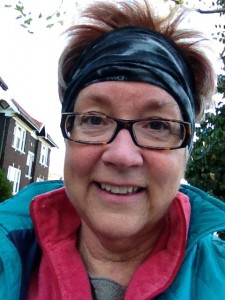 One of the many best things about being part of this Dedicated Practitioner Program is the amazing group of people I’m getting to know. For example, I was invited to spend the night before the retreat at the San Francisco home of Tony and Maggie. (Tony is a current DPP-er and Maggie completed the program a few years ago.) When I arrived, David (another DPP-er) was already there, and as we were talking, he just happened to mention that he had spend the last month walking the Camino de Santiago.
One of the many best things about being part of this Dedicated Practitioner Program is the amazing group of people I’m getting to know. For example, I was invited to spend the night before the retreat at the San Francisco home of Tony and Maggie. (Tony is a current DPP-er and Maggie completed the program a few years ago.) When I arrived, David (another DPP-er) was already there, and as we were talking, he just happened to mention that he had spend the last month walking the Camino de Santiago.
That’s a 500-mile walk across Spain!
And then just as I was saying how awesome I thought that was, and how I had once thought about doing it, but had decided it was just not realistic….Tony said that HE had ALSO walked it. Twice!
And then later, at one of our DPP small-group lunches, I mentioned my astonishment that David had walked the Camino and then Leahe (another DPP-er) said that a friend of hers….a friend about my age AND my SHAPE…had also just finished walking it. And then Carolyn (my weekly check-in DPP Buddy) said that SHE had always wanted to walk it, and that maybe if I were going to be doing it…..
Well OK then.
I’m going to do it!
Not next year, because believe it or not, next year is already pretty much booked. And besides, much preparation…including some serious training….will need to be done.
But the year after that, I’m doing it.
And in the mean time….
I’ve been out walking!
Dharma Buddies
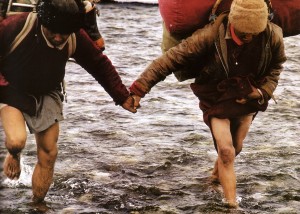 At the retreat, one of the teachers (Anushka Fernandopulle) mentioned that early in her dharma life, she decided to take on the practice of reading one sutta every day. There are LOTS of suttas (teachings)….152 in the Middle Length Discourses alone…so I’m sure it’s a many-year practice, but somehow the idea really inspired me and I decided to do the same thing.
At the retreat, one of the teachers (Anushka Fernandopulle) mentioned that early in her dharma life, she decided to take on the practice of reading one sutta every day. There are LOTS of suttas (teachings)….152 in the Middle Length Discourses alone…so I’m sure it’s a many-year practice, but somehow the idea really inspired me and I decided to do the same thing.
Our primary text for the Dedicated Practitioner Program is The Middle Length Discourses of the Buddha (Majjhima Nikaya), translated by Bhikkhu Nanamoli and Bhikkhu Bodhi, so I’ve started with that. (Bhikkhu Bodhi, by the way, was at the retreat! Which I think was part of the reason I was so inspired.)
We’ve already read quite a few of these suttas (the Satipatthana Sutta was the subject of one entire retreat) but reading ALL of them, one by one, day after day…that’s a whole other thing.
Luckily, one of my DPP Dharma Buddies ALSO decided to take on the practice.
I’ve just finished reading #9. These teachings were orally transmitted for the first several hundred years, so they’re formulaic and repetitive to say the least.
But there’s also something profound about the form….and the pace.
I feel grateful to have found this path and to be on this journey.
Still, it’s good not to be going it alone.
(image from Danielle and Olivier Follmi)
Comfort
I think it’s fascinating to see all the different ways people try to make themselves comfortable in the meditation hall. Here are a few examples. (My own is included.)
Room with a View
Hey there! I’m back from retreat at Spirit Rock and have MUCH to say, but it will have to wait till I get caught up with emails. In the mean time, I leave you with a peek into the meditation hall.
 Here’s a view looking toward the front.
Here’s a view looking toward the front.
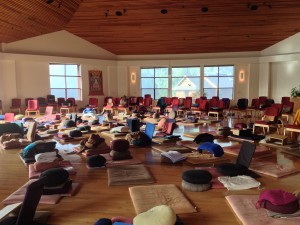 Here’s a view looking across, toward the back.
Here’s a view looking across, toward the back.
 And here’s a view from the floor…..looking up!
And here’s a view from the floor…..looking up!
I’ll post more tomorrow. Stay tuned.

